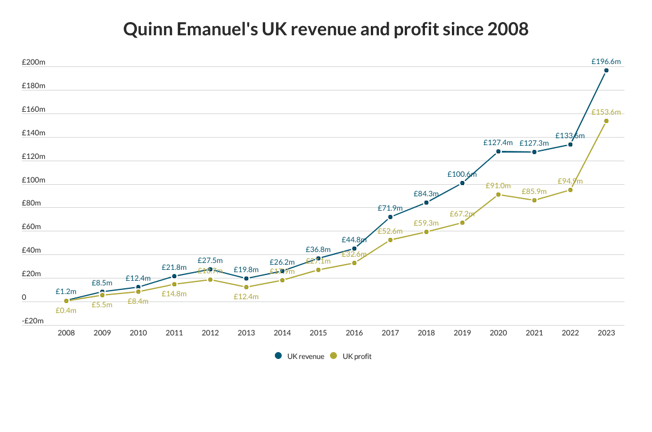Navigating the often perplexing world of UK property leasing, where the occupier takes the burden of property risk, both physical and financial, is not easy. For years tenants have put up with upwards-only rent reviews, long leases (of 20-plus years) and have footed the bill for costs associated with rectifying faults in poorly-constructed buildings. Until recently, law firms have been no exception.
The current preoccupation of the property industry seems to be defending this one-sided arrangement. The vested interests of what is ultimately an industry dominated by the supply side will not adapt to change without a fight. The Commercial Lease Code of Practice, developed by a group led by the Royal Institution of Chartered Surveyors (RICS) and the British Property Federation, was introduced in April 2002 as a “voluntary mechanism for providing good practice in the UK property industry”. It was produced as a reaction to pressure from the Government to provide tenants with greater flexibility and transparency. At the end of this year, Reading University will be undertaking a review of the impact of the code. It is vital that this review can distinguish between the impact of the code and the weakness of the current market, which is undoubtedly providing scope for tenants to transact on more advantageous terms.
The Government is already gearing itself up for the need for legislation to achieve its objectives. This was signalled by the Chancellor in his April 2003 Budget speech, when he commented that “inflexible lease terms can restrain businesses’ growth and expose them to undue risk”. The industry has been warned and must prepare for change.
But what does all this inflexibility, arising from a cocktail of institutional leases, actually mean in cost terms? The April 2002 report entitled ‘Property in Business – A Waste of Space?’, from leading economist Roger Bootle, brings some long-awaited clarity. Commissioned by the RICS, this report makes staggering reading. At a high level, the study shows that some £18bn could be saved by UK businesses each year through more efficient use of their property.
One of the cures put forward in the study was a move away from the institutional lease framework and the adoption of short leases, plus the introduction of break clauses.
None of us like change, but the industry is showing all the signs of being too complacent about the attributes of the institutional lease. Developers and investors have lost sight of the consequences of such onerous terms to businesses in an era of short-term planning and the need for cost certainty. The institutional lease is a dinosaur which
has had its day. It is time to adapt to new products and move on.
Innovation rarely comes easily to the property industry. Similarly, law firms have tended to be fairly traditional in their approach to property management. But this has begun to change, with more innovative firms looking to address issues of cost, flexibility and working environment.
In its move to Lacon House, Nabarro Nathanson recognised that it was consuming too much space in its old premises and hence spending too much on property. It was also grappling with how technology and flexible ways of working could provide an environment that staff and partners found pleasant to work in. An impending lease expiry in the firm’s Stratton Street headquarters provided the opportunity to embark on a radical reassessment.
Former head of real estate Geoffrey Lander saw the property relocation not just as a cost, but also as a contributor to the output of the firm. Making this financial linkage between corporate strategy and real estate was a vital first step.
Developing a strategy required a major rethink on how to source property product. The traditional approach of starting with the property search went out of the window and in came a more forensic examination of affordability ratio (occupancy cost:revenues), occupation densities, quality and effectiveness of floor space and lease flexibility.
From the outset, Nabarros set out four critical success factors: that the property strategy should match the new business strategy; that strategic goals of a 10 per cent affordability ratio with a 20 per cent reduction in occupancy cost should be met; that improved quality and effectiveness of floor space should be sought; and that there should be a reduction in the total amount of square feet consumed.
Such a rigorous review by the business was essential to setting the goals for the relocation project as a whole.
An early revelation in this process was that it was the square feet per person that was much more important than the rental cost per square foot. The US-style ‘request for a proposal’ approach was adopted for products that matched the full brief. Consistency of data from the responses enabled a more robust financial analysis, and a shortlist of 16 buildings matching the financial criteria was quickly reduced to six. Qualitative analysis on location, floor plates, specification and flexibility further reduced the options down to two.
Land Securities took a positive attitude to Nabarros’ different approach to procuring space. By dovetailing the financial parameters sought by the firm with Land Securities’ required financial return from the renovation, a deal was struck that effectively fixed the rent for the 15-year term. Also, by agreeing the deal before the renovation began, the facilities could be designed to match the needs of those who were to work in the building.
In property terms, the transaction achieved a space saving of 26,500sq ft, or 57sq ft per employee, the affordability ratio was reduced to 10 per cent, and the total annual occupancy reduction target of 20 per cent was achieved.
In business terms, adopting a strategic approach to Nabarros’ relocation has meant that a major cost variable had now been managed for the next 15 years. As a consequence, a more competitive position was taken on fee rates as market forces drove all other costs. By fixing property costs, the partnership could plan long term at improved margins, assisting investment, recruitment and partner retention.
The success of Nabarros to achieve staff satisfaction, leasing flexibility and fixed costs provides a property strategy and leasing model that all occupiers have an opportunity to copy.
So, while the supply side of the property industry grapples with the spectre of legislation to impose the more flexible leasing sought by the Chancellor, there is some innovation emerging from the market. Law firms that take such an innovative approach will see the benefit on their bottom lines.
Simon Brooke is a director at Jonathan Edwards Consulting
Taylor Wessing goes on German IP drive
Taylor Wessing has been on an intellectual property hiring spree in Germany. Martin Köhler, a patent litigator, joins the firm’s Düsseldorf office from Clifford Chance Pünder and Kai Westerwelle, and IT specialists joins the Frankfurt office from Freshfields Bruckhaus Deringer. The Munich office has also hired partner Christian Lederer from local full-service firm Arcon and […]





























